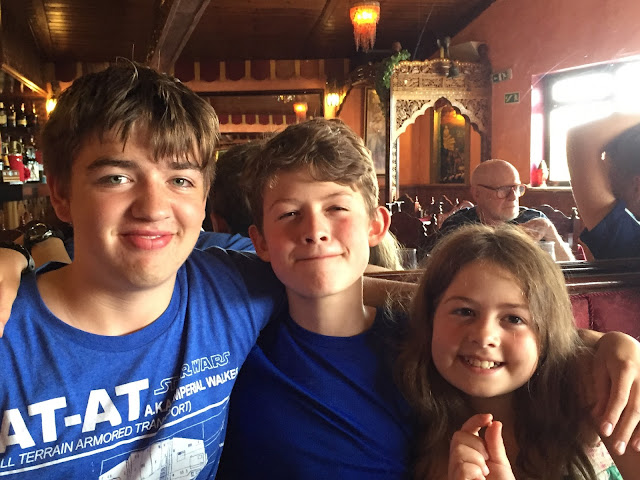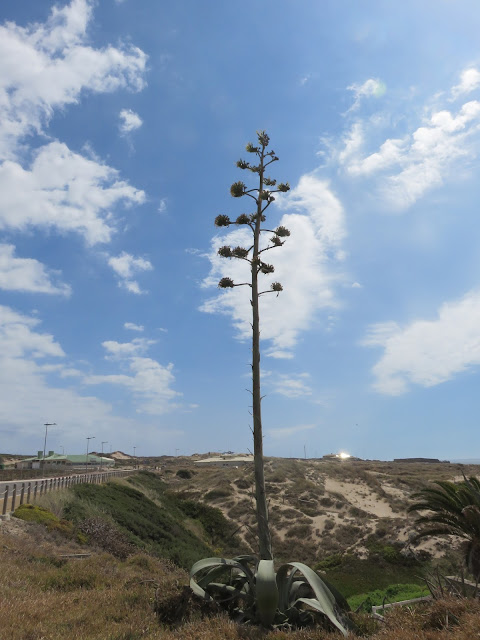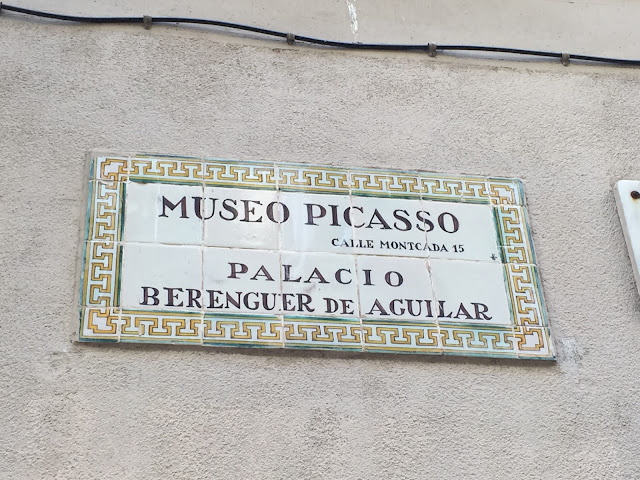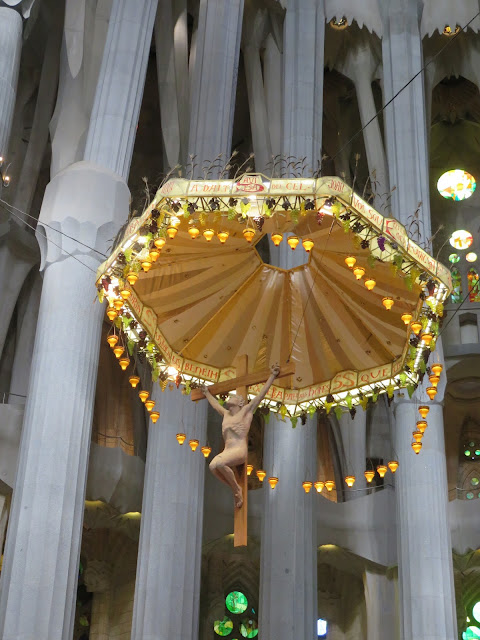 |
| thank goodness for pano lenses. 99k. |
From one sacred space to another, our next stop was
Camp Nou, the 99,000 seat home field of FC Barcelona. This part of the day was dedicated to our youngest, who lives for soccer and plays year-round. As we were planning our trip, I had heard from another soccer parent that the Camp Nou Experience was really great. That you could tour the press box and the locker rooms, and you could go out on the pitch. When I purchased advanced tickets, I was surprised that there was no timed entry as for other "cultural" sites. We could visit at any time, which worked well for the open-ended parts of our day.
When we were no longer able to absorb another square inch of
Sagrada Familia, we hopped in a taxi and headed for Camp Nou. Before we could even enter the museum, we had to run the gauntlet of fans who'd stop on a dime to pose for photos with player posters. The Experience was a little bit excruciating from almost immediately. The museum had a lot of great memorabilia that spanned a century--trophies, jerseys, shoes, newspapers and magazines, game programs, patches, pins, and more. Then, the tour: it's not very dissimilar from shopping at IKEA. There was one way in and one way out, and you're herded through all the exhibits, which wouldn't be horrible except that the entire facility was crowded with so many people. So so many people. And, it was hot and smelly. And, yes, I'm complaining. Because I couldn't complain then. I didn't want to ruin it for Winston, but even he said, "Mom, I wish it had been more exclusive." See how we can learn something from our children. This was probably the politest thing he's ever said. He's 13 and didn't want to show me that
he was disappointed.
Anyhow, we were photographed for security, then funneled through the press room:
into a locker room (no names on lockers made me think this was the visitors' locker room)
by the chapel for last-minute prayers:
and, onto the pitch (even though this was as much of the turf as we were allowed to step on)

Then we spent an hour in the FCB Superstore. So many jerseys to mull. After we made our purchases (both boys chose the same kit!), we grabbed a taxi, picked a restaurant at random in our travel guide, and asked our cabbie to take us to
the El Raval neighborhood. Once we arrived,
the restaurant looked a little full. No line out the door, but crowded
nonetheless. Lucky for us, you couldn't swing a cat without hitting a
restaurant in Placa de les Olles, the charming little square where we'd been deposited.
John spotted Ristorante Gravin where we tucked in to a superlative tapas and pasta lunch. I cannot believe I did not take any pictures. I didn't even write down what we ate, which was a travesty because the restaurant's link is broken. One of our tapas was a porchetta--super seasoned, thinly sliced pork loin with attendant peppery lardo that we ate on bread. My main was a pasta with a tomato-swordfish sauce that was exquisite. Mostly I remember being really happy and sated.
After we ordered and were settled into our bottle of white rioja, I bought tickets for the
Museu Picasso. The first opening was two hours out, which was perfect since I anticipated that our lunch would be a long one. I felt very lucky since I hadn't pre-purchased tickets before we left home. Our friends who were in Barcelona in June told us they were unable to get tickets and were disappointed to have missed the museum. It is the top tourist attraction in Barcelona, which is somewhat surprising to think that it is more popular than either Sagrada Familia or Camp Nou at which we saw maybe a million people.
The Picasso museum was a 10-minute walk from the restaurant, and we took our time wandering through the old, dark, winding, narrow streets of El Raval.
 |
| streets of El Raval |
|
 |
| laundry day |
 |
| enjoying a churros snack |
The museum's collection, housed in five mansions, focused on Picasso's formative period, particularly up to the Blue Period, but also featured his last major cycle,
Las Meninas. The permanent collection contained over 4,000 works, but it was difficult to tell how many were on display. John and I agreed that this wasn't the best representation of Picasso's work, although we did enjoy the two large galleries of studies for
Las Meninas and found them absolutely exhaustive. No photography was allowed so I borrowed these images from
wikiart.
 |
| Las Meninas (Picasso), 1957 |
|
|
|
 |
| Las Meninas study (Picasso), 1957 |
 |
| Marguerite (Velasquez on left, Picasso on right) |
We walked back to Eixample from the Picasso Museum, and it was a long, long walk (over 2k). Along the way we found Verdu the good ice cream/orxata place and got cones. Winston and I each had milk and cinnamon ice cream, which was so refreshing and unique in that it was a light milky, non-eggy base with cinnamon sprinkled on top. I would love to replicate it at home.
After naps, we headed back to the vicinity of Verdu because we had seen a restaurant that was a strong candidate for dinner. But, we couldn't find it. Instead, we found Josephine, which was fairly empty and very expensive, but had an incredible Jazz Age vibe and a golden glow.
We started with a cheese plate and foie gras plus these punch bowl-sized gin tonics
Amuse bouche: roasted baby artichoke and olive oil puffs that looked like marshmallows
Winston and I shared steak, served on a little burner with big flakes of finishing salt, and fried potatoes and padron peppers
We talked about all the amazing things we saw in Barcelona and vowed to study Spanish so that when we return, we can fully immerse ourselves. We talked about coming back in 2026 to see the completion of Sagrada Familia, which gave us chills at the the idea of such an auspicious accomplishment. But I hope we return sooner. I'd still like to visit La Boqueria and the Santa Caterina market with its colorful roof (food halls); the Olympic Park and Gehry's big fish; the maritime museum that our friends said had surprised them; the Fundacio Antonio Tapies; the Barcelona Pavilion designed by Mies van der Rohe for the 1929 World Exhibition; La Seu (Barcelona's cathedral) and the Barri Gotic; listen to jazz guitars and watch flamenco; and more.
But first, we had plans to meet up with family in Portugal for a week of sun in an off-the-beaten path European country.

























































